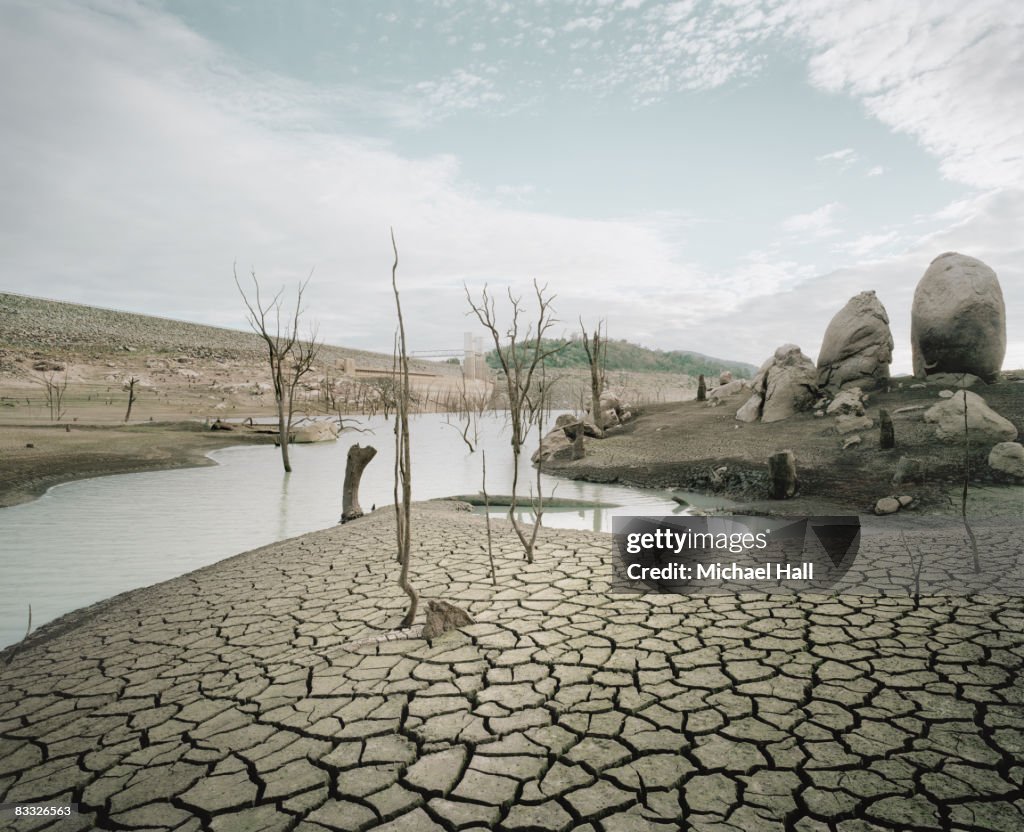
Climate Change is not only the main source of energy that drives Earth’s climate system. A portion of the sunlight that reaches Earth is reflected back into space, especially by bright surfaces such as snow, ice, and clouds. The remainder is absorbed by the planet’s surface and atmosphere. This absorbed solar energy is later released as heat (longwave or infrared radiation). The atmosphere absorbs and re-emits some of this heat, while the rest escapes into space. Any shift in the balance between incoming solar energy and outgoing heat will influence the climate. For instance, even small variations in the Sun’s energy output directly impact this balance.
If all the heat radiated from Earth’s surface traveled straight through the atmosphere and out into space, the planet’s average surface temperature would be many degrees colder for Climate Change than it is today. Greenhouse gases—such as water vapor, carbon dioxide, methane, and nitrous oxide—warm the surface by absorbing and releasing heat in all directions (including back toward the surface), maintaining a temperature range that supports life. Without this natural greenhouse effect, Earth would be far too cold for most known life forms. Increasing the concentration of greenhouse gases strengthens this heat-trapping effect, preventing more energy from escaping into space. When less energy leaves the planet than enters it, Earth warms until a new energy balance is reached.
Read more about Trendy Gadgets
Read more about Climate Suitable
The levels of carbon dioxide, methane, and nitrous oxide in the atmosphere have risen sharply since the onset of the Industrial Revolution. For carbon dioxide, measurements from the Mauna Loa Observatory in Hawaii show an increase from 316 parts per million (ppm) in 1959—the first complete year of recorded data—to over 411 ppm in 2019 [Figure B2]. Similar trends have been observed at many other monitoring stations worldwide. Since preindustrial times, atmospheric CO2 has climbed by more than 40%, methane levels have surged by over 150%, and nitrous oxide concentrations have grown by around 20%. More than half of the total CO2 rise has occurred since 1970. All three gases contribute to Climate Change, with CO2 being the most significant factor. See page B3 for details on sources of human-generated greenhouse gases.
Researchers have investigated greenhouse gases in the context of Earth’s history. Studies of air bubbles trapped in Antarctic ice layers, which have built up over long periods, reveal that CO2 levels began a marked rise in the 19th century [Figure B3], after remaining between 260 and 280 ppm for roughly the last 10,000 years. Ice core records extending back 800,000 years indicate that CO2 concentrations fluctuated between 170 and 300 ppm through multiple ice age cycles, with no recorded values above 300 ppm until the past two centuries.
Analysis of carbon isotopes in today’s atmosphere shows a distinct signal of “old” carbon—lacking in the naturally occurring radioactive isotope 14C—originating from the burning of fossil fuels, rather than “fresh” carbon from living organisms. Additionally, current human activities (excluding land-use changes) release an estimated 10 billion tonnes of carbon annually, primarily from fossil fuel combustion, which more than accounts for the observed increase in atmospheric CO2. Together, these and other findings make it clear that the elevated CO2 levels in the atmosphere are directly caused by human actions.
Determining the rise in the global average surface air temperature involves a detailed assessment of millions of readings collected worldwide from land-based weather stations, ocean-going vessels, and satellites. Even with the many challenges of combining such diverse data sources, several independent research groups have reached the same conclusion: the global average surface air temperature has increased by roughly 1 °C (1.8 °F) since 1900 [Figure B4]. Although the historical record reveals periods of slower growth and faster rises, each of the past four decades has been warmer than any other decade since systematic measurements began in 1850.
Looking further back, before reliable thermometers were common, scientists reconstruct past temperatures using climate-sensitive indicators—known as “proxies”—found in tree rings, ice cores, and ocean sediments. Comparisons between these proxy data and the thermometer record indicate that the period from the early 1980s to today has been the warmest 40-year span in at least 800 years, with global temperatures approaching the highest levels experienced 5,000 to 10,000 years ago during the warmest phase of the current interglacial era.
Numerous other consequences linked to this warming trend have emerged in recent decades. Arctic summer sea ice coverage has decreased sharply. The total heat stored in the oceans has risen. Since 1901, the global mean sea level has climbed by about 16 cm (6 inches), caused by both the thermal expansion of warming seawater and the addition of meltwater from glaciers and land-based ice sheets. Shifts in temperature and rainfall patterns are changing where many species of plants and animals can survive, as well as the timing of their seasonal activities. Beyond climate effects, some of the excess atmospheric CO₂ is being absorbed by the oceans, altering their chemical balance and driving ocean acidification.
From a purely physical standpoint, considering only the amount of energy carbon dioxide absorbs and re-emits, doubling its atmospheric concentration from pre-industrial levels to about 560 ppm would, on its own, raise the global average temperature by roughly 1 °C (1.8 °F). In reality, Earth’s climate system is more complicated—warming triggers additional processes, known as feedbacks, that can either intensify or reduce the initial temperature rise.
The most significant feedbacks involve water in its various forms. A warmer atmosphere typically holds more water vapor. Since water vapor is itself a powerful greenhouse gas, its increase boosts warming further. However, because water vapor remains in the atmosphere for only a short time, its concentration closely tracks temperature changes, making it an amplifier rather than an independent cause of climate change. Higher temperatures in polar regions reduce sea ice and seasonal snow cover, revealing darker ocean or land surfaces that absorb more sunlight and increase warming. Another key but less certain feedback is linked to changes in clouds. Together, higher temperatures and greater water vapor may alter cloud cover in ways that either strengthen or lessen warming, depending on the clouds’ coverage, height, and characteristics. Current scientific assessments suggest that, overall, cloud changes are more likely to enhance rather than counteract warming.
The ocean plays a moderating role in climate change. It acts as an immense heat store, but heating its full depth is challenging because warmer water tends to remain near the surface. As a result, heat transfer to the deep ocean is slow and varies from year to year and decade to decade, influencing how quickly surface warming occurs. While subsurface ocean temperature data before about 1970 are limited, measurements since then show a clear warming of the upper 700 meters (about 2,300 feet), with deeper layers also warming noticeably since the 1990s.
Local climate conditions differ widely from the global average due to geographic factors, especially latitude and proximity to continents. Regional variations in temperature, precipitation, and extremes—often the most impactful for ecosystems and human infrastructure—are also shaped by prevailing wind patterns.
Projecting how feedback processes will influence future warming, determining the rate of change, and estimating regional impacts require advanced mathematical models that simulate the atmosphere, oceans, land, and ice systems. These models are grounded in well-established physical laws and the latest scientific understanding of the chemical, physical, and biological processes affecting climate, and are run using powerful computers. While models differ in their specific warming projections—depending on their design and assumptions about processes like cloud development and ocean mixing—they consistently agree that feedbacks, on balance, amplify the warming caused by increased greenhouse gases.
Thorough examination of all available data and lines of evidence indicates that the majority of global warming observed over roughly the last half-century cannot be accounted for by natural processes alone, but instead points strongly to a major role played by human activity.
To identify humanity’s impact on the climate, researchers must account for numerous natural variations that influence temperature, rainfall, and other climate features on scales ranging from local to global, and over time spans from days to decades and beyond. One such natural fluctuation is the El Niño–Southern Oscillation (ENSO), an irregular cycle of warming and cooling in the equatorial Pacific Ocean occurring every two to seven years, which brings notable year-to-year shifts in both regional and global temperature and precipitation. Volcanic eruptions also affect climate by increasing the amount of fine particles (aerosols) in the stratosphere, which scatter or absorb sunlight and typically produce a temporary surface cooling lasting about two to three years. On far longer timescales—hundreds of thousands of years—gradual, repeated changes in Earth’s orbit around the Sun alter the way solar energy is distributed, and have been sufficient to drive the ice age cycles over the past 800,000 years.
“Fingerprinting” provides a powerful approach for determining the causes of climate change. Distinct drivers produce distinct patterns in climate records. This becomes clear when scientists look beyond global average temperature shifts and instead study detailed spatial and temporal patterns. For example, an increase in solar output generates a markedly different pattern of warming across Earth’s surface and through the atmosphere than an increase in carbon dioxide levels. Measurements of atmospheric temperature change closely resemble the pattern expected from a persistent rise in CO₂, rather than the signature of solar fluctuations alone. Scientists regularly examine whether solely natural factors—such as changes in the Sun, volcanic activity, or internal climate variability—could reasonably produce the observed patterns in multiple aspects of the climate system. Their findings consistently show that the climate changes of recent decades cannot be explained without including human influences.





